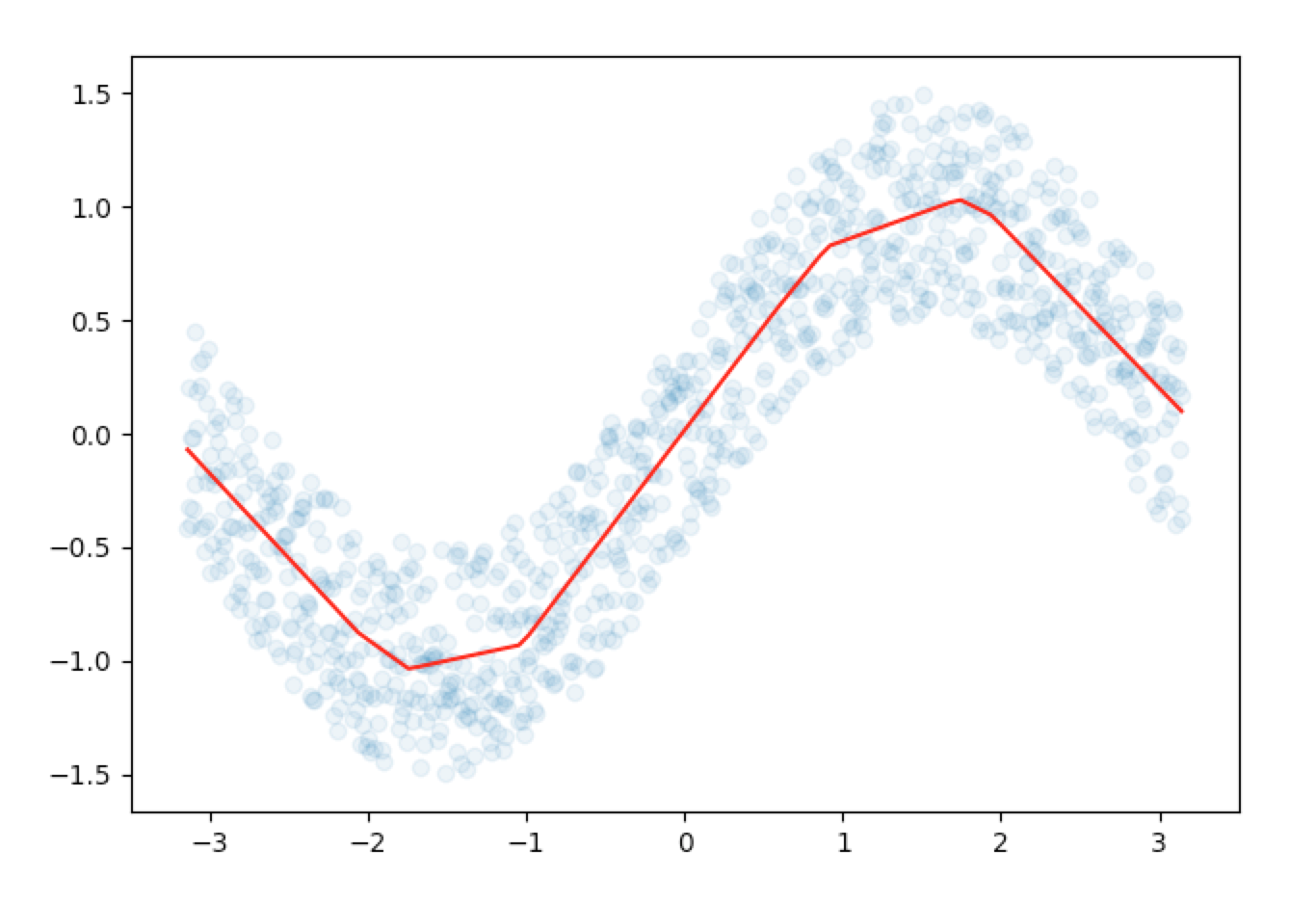Created
June 29, 2017 21:44
-
-
Save zfedoran/86b1f8e75f9a2991b6a8d8c125269d42 to your computer and use it in GitHub Desktop.
Basic DNN Example: Approximate sine function using tflearn
This file contains hidden or bidirectional Unicode text that may be interpreted or compiled differently than what appears below. To review, open the file in an editor that reveals hidden Unicode characters.
Learn more about bidirectional Unicode characters
| import tflearn | |
| import numpy as np | |
| import matplotlib.pyplot as plt | |
| N = 1000 | |
| # Approximate sine function using tflearn | |
| x = np.linspace(-np.pi, np.pi, N) | |
| y = np.sin(x) + np.random.uniform(-0.5,0.5, N) | |
| # Model | |
| net = tflearn.input_data(shape=[None,1]) | |
| net = tflearn.fully_connected(net, 1) | |
| net = tflearn.fully_connected(net, 32, activation='relu') | |
| net = tflearn.fully_connected(net, 1) | |
| net = tflearn.regression(net, optimizer='adam', loss='mean_square', metric='R2', learning_rate=0.01) | |
| model = tflearn.DNN(net) | |
| model.fit(x.reshape(-1, 1), y.reshape(-1, 1), batch_size=100, n_epoch=100, shuffle=True) | |
| # Test the model | |
| x0 = np.linspace(-np.pi,np.pi,100).reshape(-1, 1) | |
| pred = model.predict(x0) | |
| plt.plot(x0, pred, color="r") | |
| plt.scatter(x, y, alpha=0.1) | |
| plt.show() |
Author
zfedoran
commented
Jun 29, 2017

Sign up for free
to join this conversation on GitHub.
Already have an account?
Sign in to comment